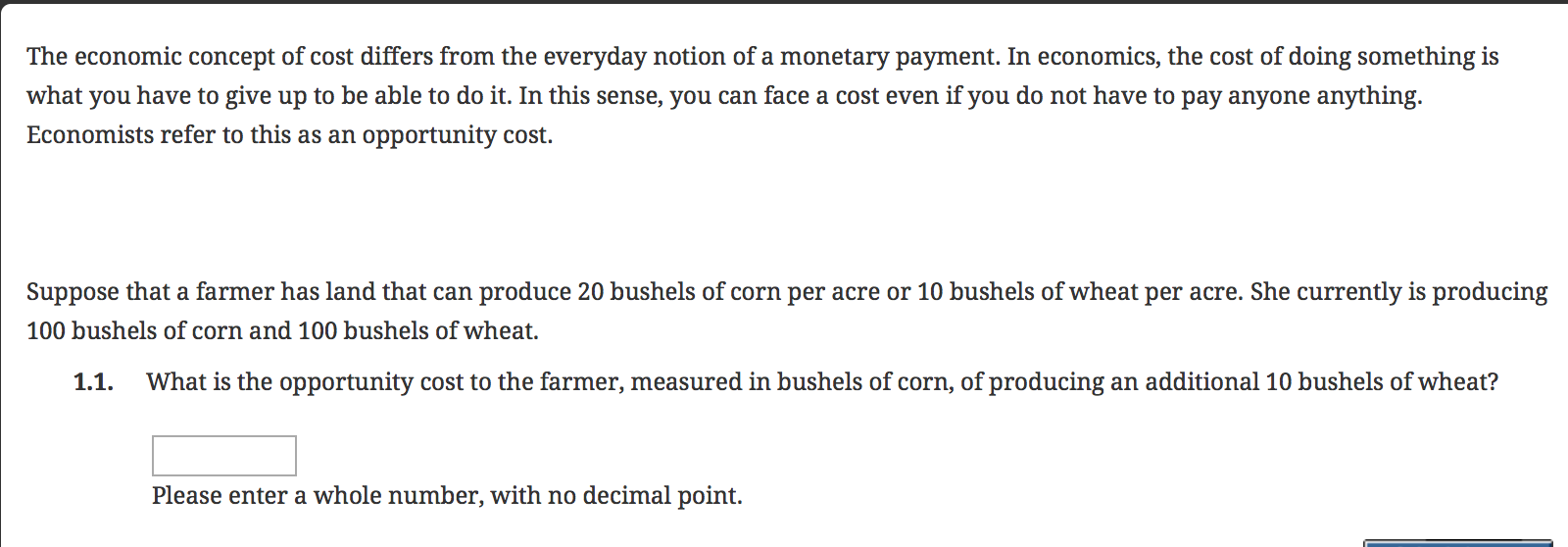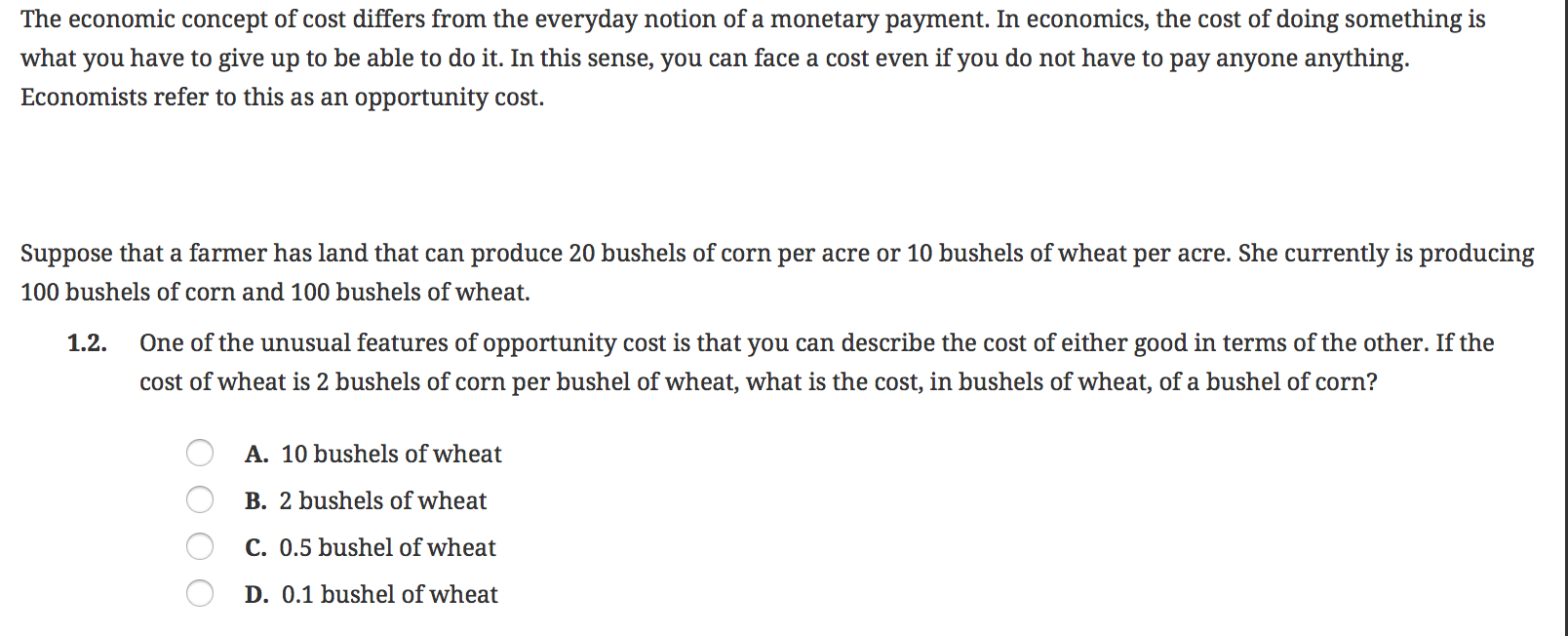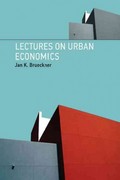Could you please provide answers to the following questions:
The economic concept of cost differs from the everyday notion of a monetary payment. In economics, the cost of doing something is what you have to give up to be able to do it. In this sense, you can face a cost even if you do not have to pay anyone anything. Economists refer to this as an opportunity cost. Suppose that a farmer has land that can produce 20 bushels of corn per acre or 10 bushels of wheat per acre. She currently is producing 100 bushels of corn and 100 bushels of wheat. 1.1. What is the opportunity cost to the farmer, measured in bushels of corn, of producing an additional 10 bushels of wheat? E Please enter a whole numb er, with no decimal point. The economic concept of cost differs from the everyday notion of a monetary payment. In economics, the cost of doing something is what you have to give up to be able to do it. In this sense, you can face a cost even if you do not have to pay anyone anything. Economists refer to this as an opportunity cost. Suppose that a farmer has land that can produce 20 bushels of corn per acre or 10 bushels of wheat per acre. She currently is producing 100 bushels of corn and 100 bushels of wheat. 1.2. One of the unusual features of opportunity cost is that you can describe the cost of either good in terms of the other. If the cost of wheat is 2 bushels of corn per bushel of wheat, what is the cost, in bushels of wheat, of a bushel of com? A. 10 bushels of wheat B. 2 bushels of wheat C. 0.5 bushel of wheat D. 0.1 bushel of wheat (I) (I) (I) (I) Imagine that you are a teaching assistant for your favorite economics professor. Your professor gives you the following table. It shows how many hot dogs nine different families purchased last year. The families had different levels of income. Because they lived in different towns, they also faced different prices for hot dogs and hot dog buns. Your professor claims that the table has enough information to plot three distinct demand curves for hot dogs. Quantity Demanded Price of Hot Dogs Income Price of Buns of Hot Dogs (Dollars per (Thousands of (Dollars per Family (Packages of 10) package of 10) Dollars) package of 8) A 40 2 40 2 B 50 1 40 2 C 50 2 40 1 D 30 2 SO 2 E 30 3 40 2 F 20 3 50 2 G 60 1 40 1 H 40 1 50 2 I 40 3 40 1 4.3. According to these data, are hot dogs an inferior good or a normal good? A A. Inferior O B. Normal









